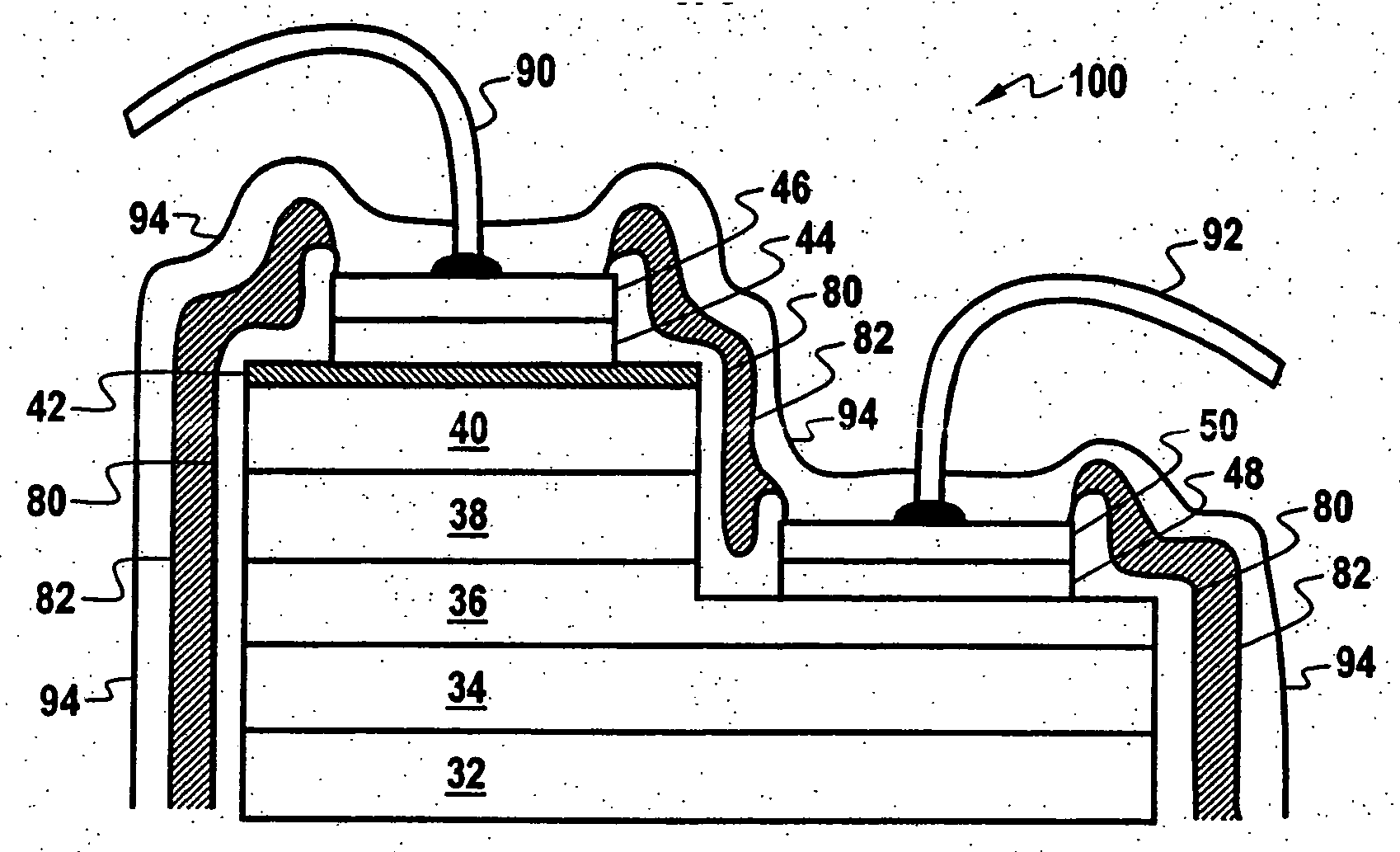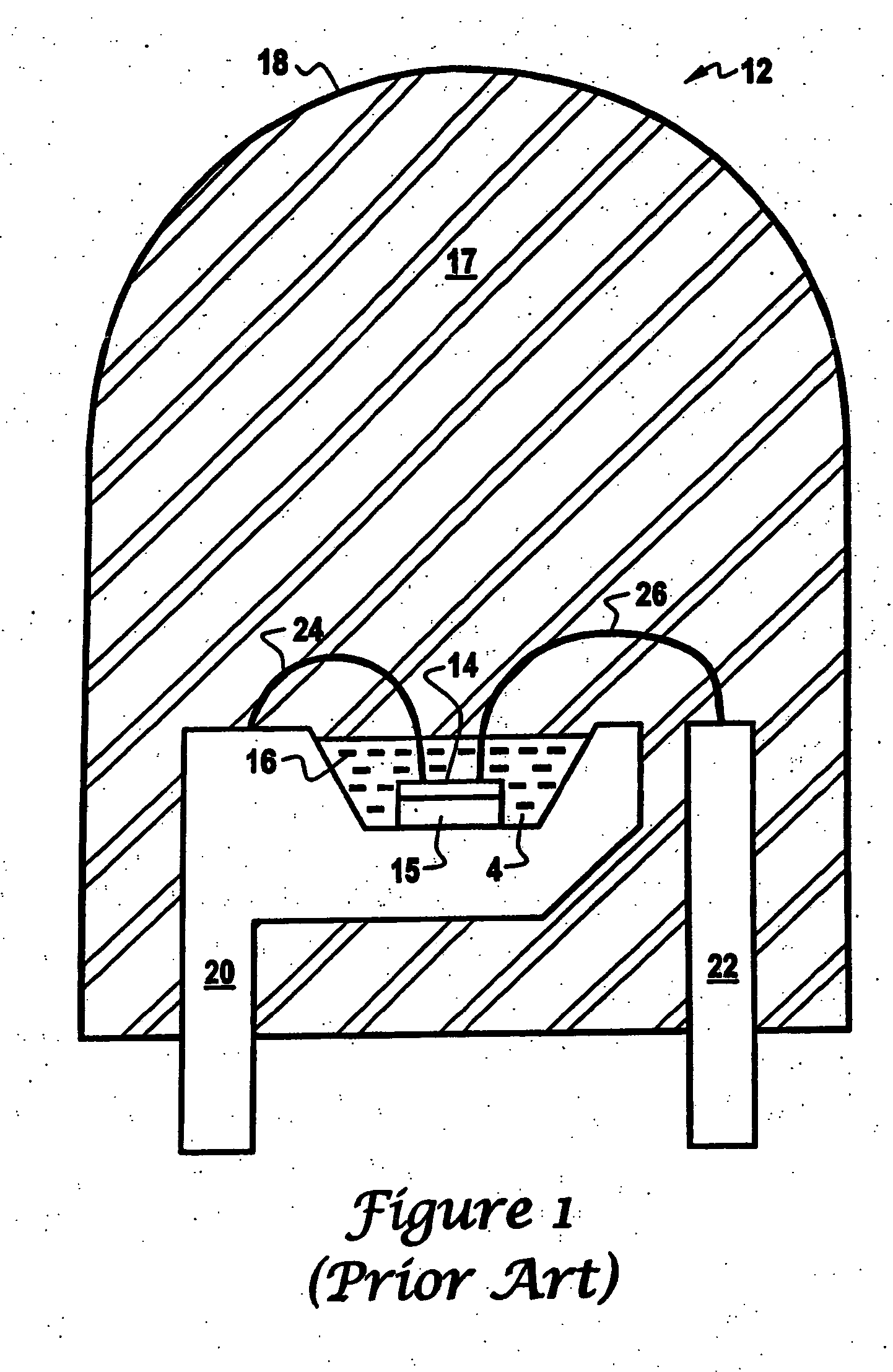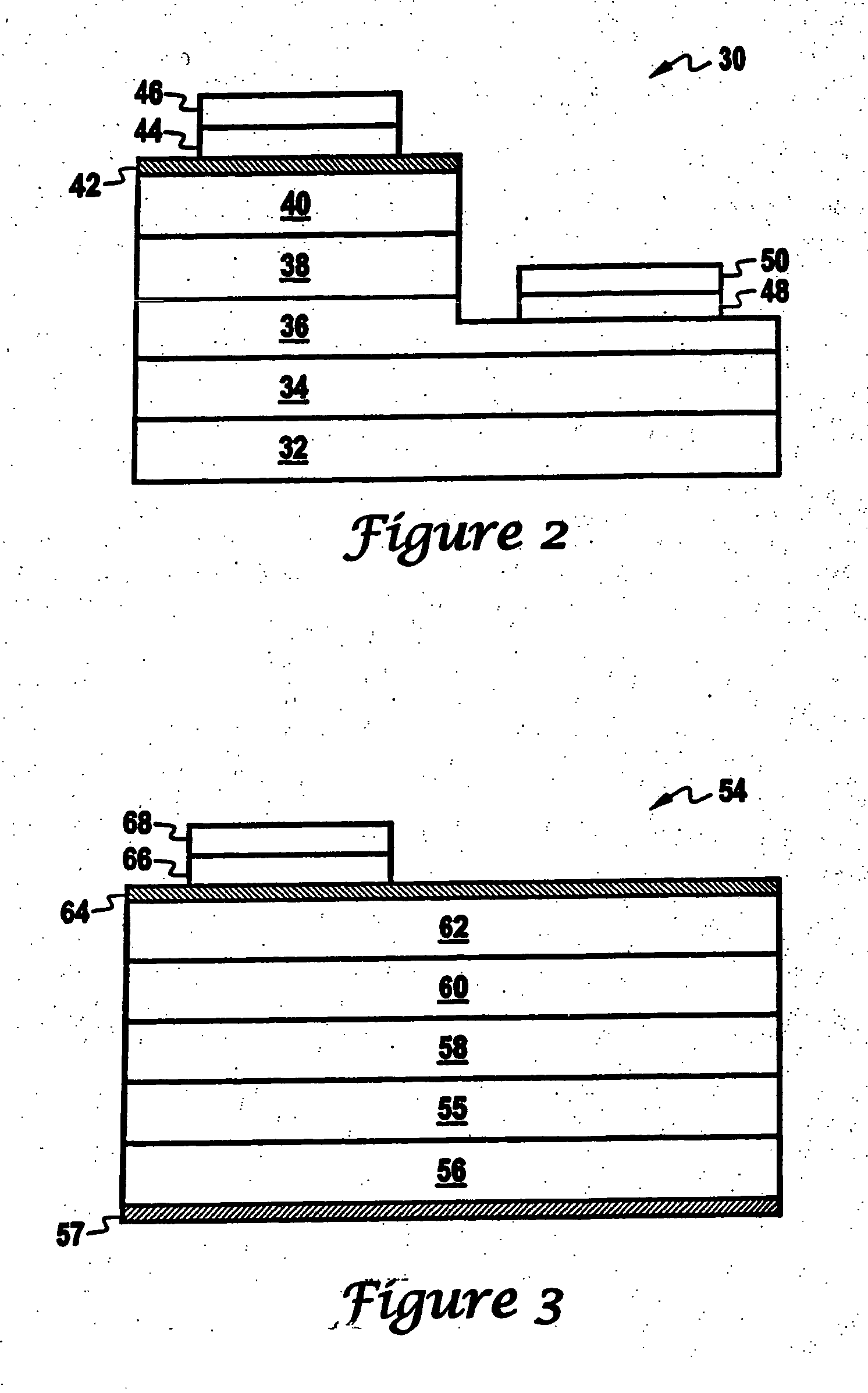Thin film light emitting diode
a light-emitting diode, thin film technology, applied in the direction of semiconductor devices, semiconductor/solid-state device details, electrical apparatus, etc., can solve the problems of low luminous efficiency, low lifetime of incandescent bulbs, heavy and expensive support devices, etc., to reduce or eliminate bonding wires, led chips, lead and/or phosphor degradation, and improve light uniformity
- Summary
- Abstract
- Description
- Claims
- Application Information
AI Technical Summary
Benefits of technology
Problems solved by technology
Method used
Image
Examples
Embodiment Construction
[0035] The following generally describes a process for fabricating on-chip white LEDs. While that description is an advantageous method of fabricating white LEDs, the principles of the present invention are not limited to that described method. Accordingly, the present invention is to be limited only by the claims that follow as understood and interpreted according to United States Patent Laws.
[0036] Fabrication of a white light emitting diode that is in accord with the principles of the present invention begins with procurement of, such as by fabrication, a blue-LED chip having p and n contact pads. FIGS. 2 and 3 illustrate suitable blue-LED chips. In particular, FIG. 2 illustrates a lateral topology blue-LED chip 30 that is fabricated on a sapphire substrate 32. An n-GaN buffer layer 34 is formed on the substrate 32. A relatively thick n-GaN epitaxial layer 36 is then formed on the buffer layer 34. An active layer 38 having multiple quantum wells of aluminum-indium-gallium-nitrid...
PUM
 Login to View More
Login to View More Abstract
Description
Claims
Application Information
 Login to View More
Login to View More - R&D
- Intellectual Property
- Life Sciences
- Materials
- Tech Scout
- Unparalleled Data Quality
- Higher Quality Content
- 60% Fewer Hallucinations
Browse by: Latest US Patents, China's latest patents, Technical Efficacy Thesaurus, Application Domain, Technology Topic, Popular Technical Reports.
© 2025 PatSnap. All rights reserved.Legal|Privacy policy|Modern Slavery Act Transparency Statement|Sitemap|About US| Contact US: help@patsnap.com



